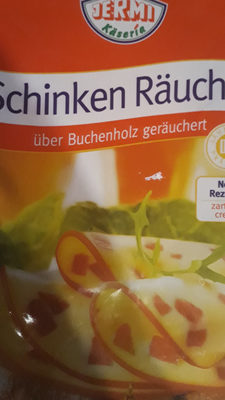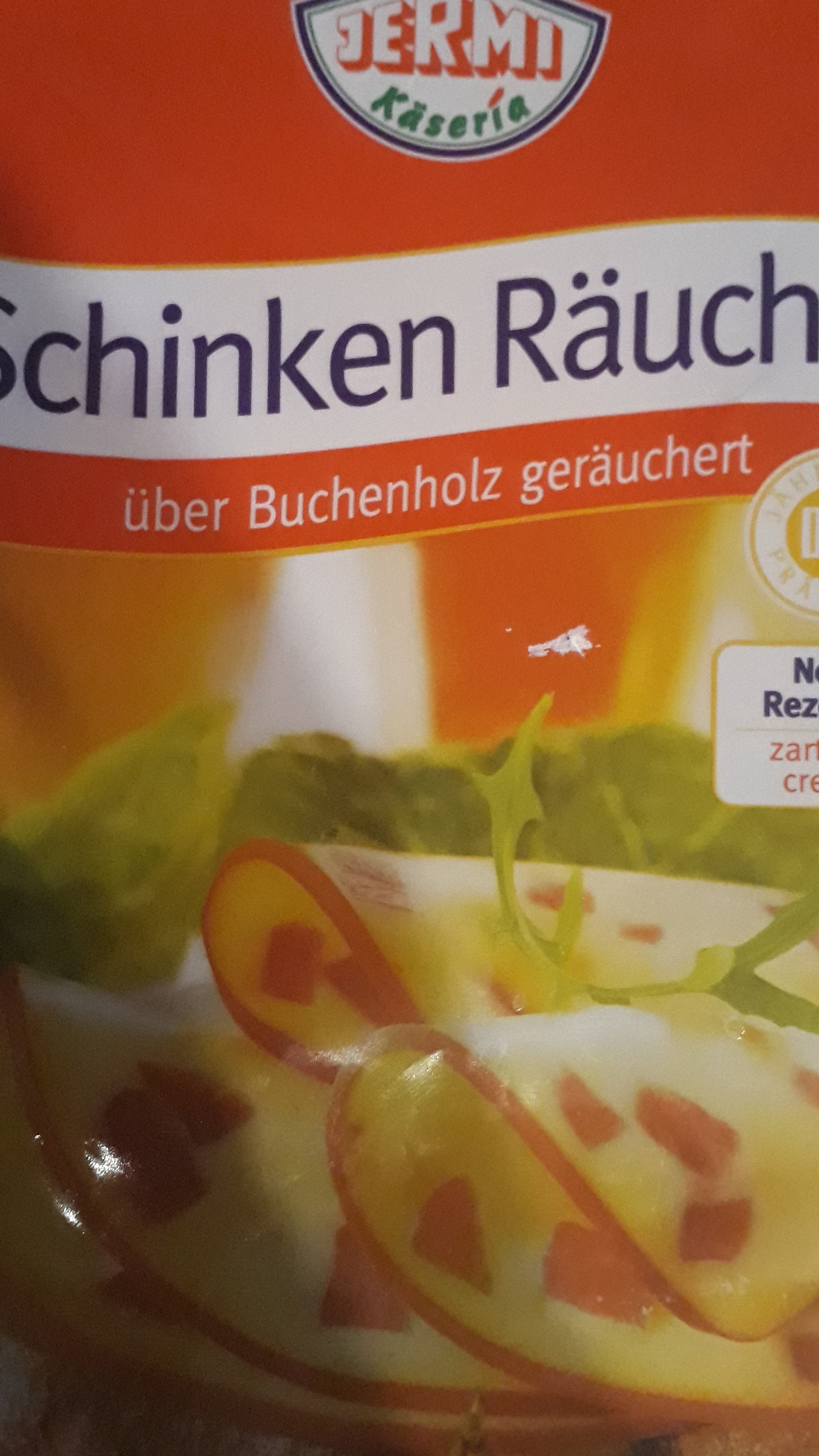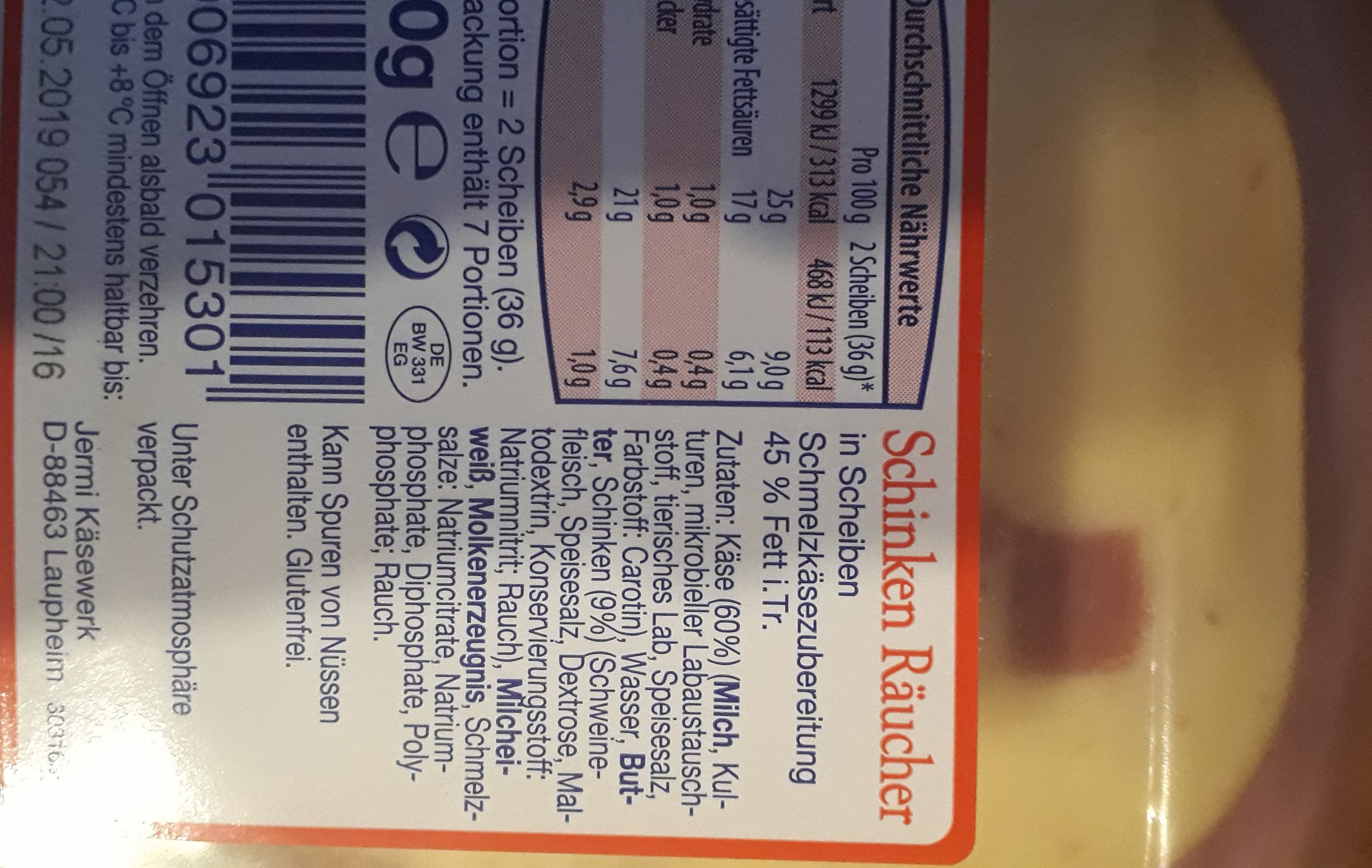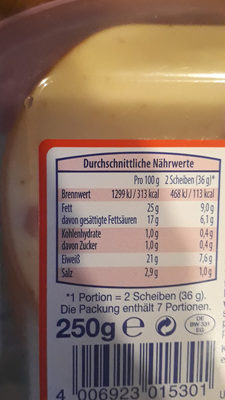Schinken Räucherkäse - Jermi Käseria - 2 Scheiben (36g)
This product page is not complete. You can help to complete it by editing it and adding more data from the photos we have, or by taking more photos using the app for Android or iPhone/iPad. Thank you!
×
Barcode: 16944992
Quantity: 2 Scheiben (36g)
Brands: Jermi Käseria
Categories: de:Schmelzkäsezubereitung
Labels, certifications, awards:
No gluten, Green Dot
Manufacturing or processing places: Laupheim
Traceability code: DE BW 331 EG
Countries where sold: Germany
Matching with your preferences
Environment
Packaging
Transportation
Report a problem
Data sources
Product added on by openfoodfacts-contributors
Last edit of product page on by worldtest.
Product page also edited by roboto-app, stivolonski, utronicalo.
If the data is incomplete or incorrect, you can complete or correct it by editing this page.










